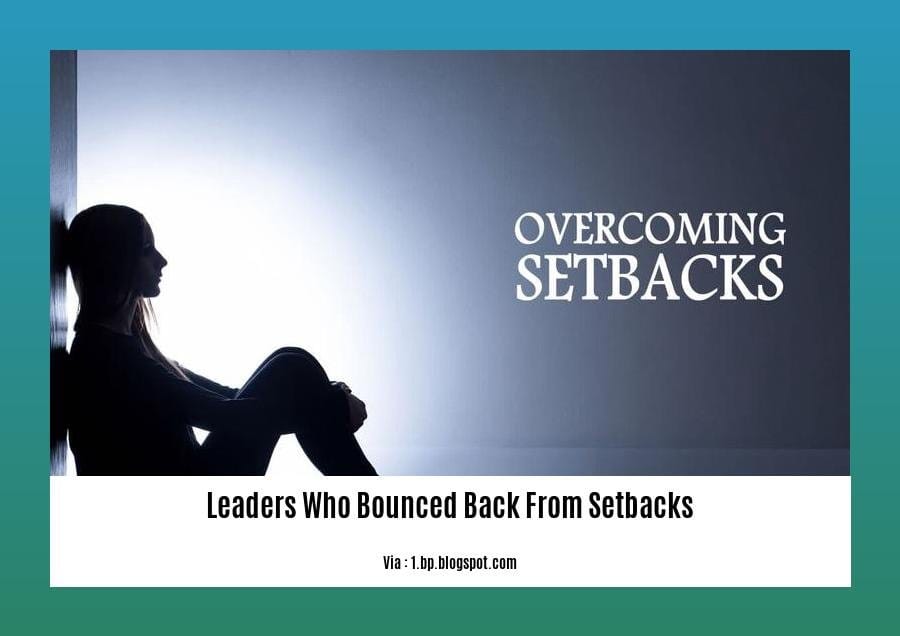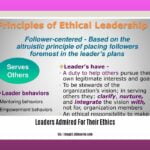In the annals of leadership, perseverance shines brightest amidst adversity. [Leaders Who Bounced Back from Setbacks: Unravelling the Power of Resilience] chronicles the extraordinary journeys of those who rose from the ashes of setbacks, unlocking the transformative power that adversity holds. Join us as we dissect their strategies and mindsets, uncovering the secrets that propelled them back to the pinnacle of success.
Key Takeaways:

- Leaders must cultivate resilience to bounce back from adversity.
- Resilience leads to increased job satisfaction, engagement, and well-being.
- Embrace setbacks as chances for personal and organizational growth.
- Leaders should adopt a development mindset that values adaptation and recovery.
- Setbacks are an inevitable and essential part of team growth.
- Leaders can foster team resilience by preventing shame spirals after setbacks.
Leaders Who Bounced Back from Setbacks: Embracing Resilience
As leaders who bounced back from setbacks, you understand the transformative power of resilience. It’s not about avoiding adversity, but about embracing it as an opportunity for growth and renewal.
Resilience is not a destination, but a journey. It requires a conscious effort to develop a mindset that sees setbacks as stepping stones rather than roadblocks. By acknowledging and accepting setbacks, analyzing the situation, developing a recovery plan, implementing it, and reflecting on the experience, you can emerge stronger and more capable.
Resilience fosters work satisfaction, engagement, and well-being. It allows you to lead with confidence, knowing that you have the inner strength to overcome challenges. By sharing your stories of resilience, you can inspire others to embrace the same mindset and unlock their full potential.
Remember, failures and setbacks are not failures, but opportunities for growth. They shape us, teach us, and make us stronger. Embrace resilience as your superpower, and lead your team through challenges with courage and determination.
- Political leaders praised for their resilience in times of crisis have demonstrated extraordinary strength and determination.
- Discover the most tenacious political leaders ever who have overcome adversity with unwavering resolve.
- Explore the stories of persevering political leaders against all odds who have inspired nations with their resilience.
Lessons Learned from Failure
As a leader, setbacks are inevitable. The key is to learn from them and bounce back stronger. Here’s how:
Acknowledge and Accept
Accepting the setback is the first step. Don’t dwell on the negatives; instead, focus on what you can learn.
Analyze the Situation
Take a step back and analyze what went wrong. Identify the factors that contributed to the setback and areas for improvement.
Develop a Plan to Recover
Based on your analysis, develop a plan to recover. This could involve changing strategies, seeking support, or adjusting your expectations.
Implement the Plan
Once you have a plan, put it into action. Take calculated risks, ask for help when needed, and don’t give up on your goals.
Reflect and Learn
After implementing your plan, take time to reflect on the experience. What did you learn? What could you have done better? Use these lessons to improve your leadership skills.
Key Takeaways:
– Resilience is crucial for handling setbacks as a leader.
– Embrace setbacks as opportunities for growth and improvement.
– Analyze setbacks to identify areas for improvement.
– Develop and implement a plan to recover from setbacks.
– Reflect on experiences to learn and grow.
Most Relevant URL Source:
Embracing Failure: The Path to Leadership Success
The Role of Mentors and Support Systems
Throughout history, leaders have overcome significant setbacks to achieve remarkable success, inspiring us to reflect on the power of resilience and the crucial role of support systems.
Resilient leaders recognize setbacks as opportunities for growth rather than setbacks. They have developed strategies to respond to adversity, drawing strength from mentors and support systems.
Key Takeaways:
- Mentors provide guidance, encouragement, and lessons learned from their own experiences.
- Support systems, including family, friends, and peers, offer emotional stability and assistance during challenging times.
- Developing resilience is a journey that involves self-awareness, adopting a growth mindset, and seeking support from others.
- Leaders can inspire others by sharing their resilience stories.
- Embracing setbacks as learning experiences contributes to personal and leadership growth.
Case Study:
Consider the story of Nelson Mandela, who spent 27 years in prison for fighting against apartheid. During this time, his resilience was fueled by the support of his family, friends, and the global community. After his release, he became the first democratically elected president of South Africa, demonstrating the transformative power of resilience and support.
Practical Tips:
- Seek out mentors who have experienced similar challenges and can provide valuable advice.
- Build a strong support network of family, friends, and peers who believe in you.
- Develop self-awareness and a growth mindset to navigate setbacks with resilience.
- Share your resilience journey with others to inspire and encourage them.
Most Relevant URL Source:
Unlocking Success: The Importance of Mentorship for Aspiring CEOs
Embracing a Growth Mindset
Setbacks are inevitable in the journey of leadership. The ability to bounce back and thrive after a setback is a mark of a resilient leader. Embracing a growth mindset, is a cornerstone for recovery and resilience in leadership. Leaders with growth mindsets view setbacks as learning opportunities, embrace challenges, and are willing to take risks.
Key Takeaways:
- Embrace Failures: Failures are not obstacles but opportunities for growth and improvement.
- Encourage Risk-Taking: Create a culture where risk-taking is encouraged, and failures are seen as learning experiences.
- Foster Resiliency: Develop strategies to build resilience among your team, including self-awareness, a growth mindset, and support systems.
- Learn from Mistakes: Analyze setbacks to identify areas for improvement and growth.
- Cultivate Mentorship: Seek support from mentors who can provide guidance and encouragement.

FAQ
Q1: How can leaders embrace failure as a catalyst for growth?
Q2: What are the essential qualities of mentors who support resilience in leaders?
Q3: How can leaders develop a growth mindset to foster resilience in the face of setbacks?
Q4: What specific actions can leaders take to prevent setbacks from spiraling into self-doubt and shame?
Q5: How can resilience positively impact both individual leaders and their teams?
- Unlock Water’s Symbolism: A Cross-Cultural Exploration - April 20, 2025
- Identify Black and White Snakes: Venomous or Harmless? - April 20, 2025
- Unlocking Potential: Origins High School’s NYC Story - April 20, 2025















